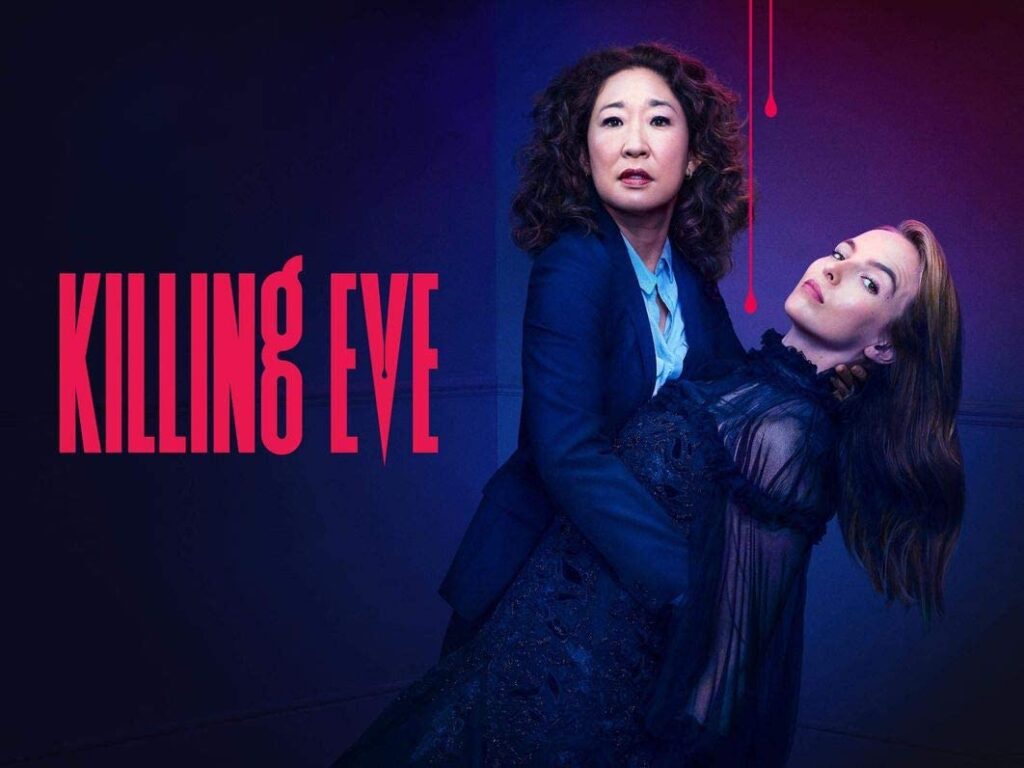Since it first hit home screens in 2018, the BBC comedy-drama spy thriller, “Killing Eve,” has provided audiences with sapphic representation in an otherwise sparse market. With LGBTQ women rarely being represented on screen, the spy genre has also been dominated by men for decades. “Killing Eve” places lesbian women in the spotlight, and continues to push all of the right boundaries in a male-dominated field.
The show tells the story of an MI6 agent, Eve Polastri, played by Sandra Oh, tasked with identifying and capturing international assassin Villanelle, also known as Oksana Astankova, played by Jodie Comer. The two soon find themselves face to face, and as the series progresses, the narrative explores their mutual obsession-turned-love story.
Both characters are prime examples of three-dimensional female characters, having been brought to life by renowned screenwriter Phoebe Waller-Bridge. With a woman-led cast and crew, “Killing Eve” ultimately shows both sapphic leads in ways that do not objectify their sexual attraction to other women, and instead focuses on the evolution of the romantic relationship between the two women.
Besides surface-level lesbian representation, “Killing Eve” explores experiences unique to sapphic women that are not seen enough in mainstream media. One example of this is on top of being sapphic, Eve is represented by a middle-aged woman and Person of Color. Being involved in a heterosexual marriage, Eve is shown throughout the show, struggling with understanding her own attraction towards another woman. Furthermore, the show explores Eve’s feelings for Villanelle and how it takes a toll on her relationship with her husband. Comparably, compulsory heterosexuality, or feeling as if being attracted to men is a societal requirement, is a common feeling many lesbians experience. Oftentimes this can continue well into adulthood, as implied through Eve’s marriage.
Additionally, “Killing Eve” explores Villanelle’s unapologetic attraction and appreciation for women. Her character is seen having numerous relationships with other women, rather than just insinuating that she’s sapphic. This simultaneously makes the audiences not question her sexuality and contrasts these casual relationships with her unique feelings towards Eve. Villanelle also showcases an impeccable sense of fashion and a snarky attitude, making her a lovable lesbian icon, even if she has killed a few people.
Having been postponed for a year due to the COVID-19 pandemic, the fourth and final season of “Killing Eve” is set to shoot between May and June of 2021. In the meantime, the rest of the series is currently available to stream via Hulu. If you’re looking for a binge-worthy show that serves as an adequate representation of the LGBTQ space, now is the time to delve into a world of lesbian spy romance, international murders and incredibly dressed Russian assassins.

This article was extremely difficult to read because it keeps saying “sapphic”. We call ourselfs lesbians.
Hi Arina,
Sapphic is an identity term defined as a woman (or woman-aligned person) loving another woman. Therefore, it is another identifier for the lesbian community. The term also serves to be gender-inclusive meaning it opens lesbianism to non-binary people. You can find more information on the term here: https://weareher.com/sapphic-meaning-lesbian-slang-glossary/
Hope this clears things up!